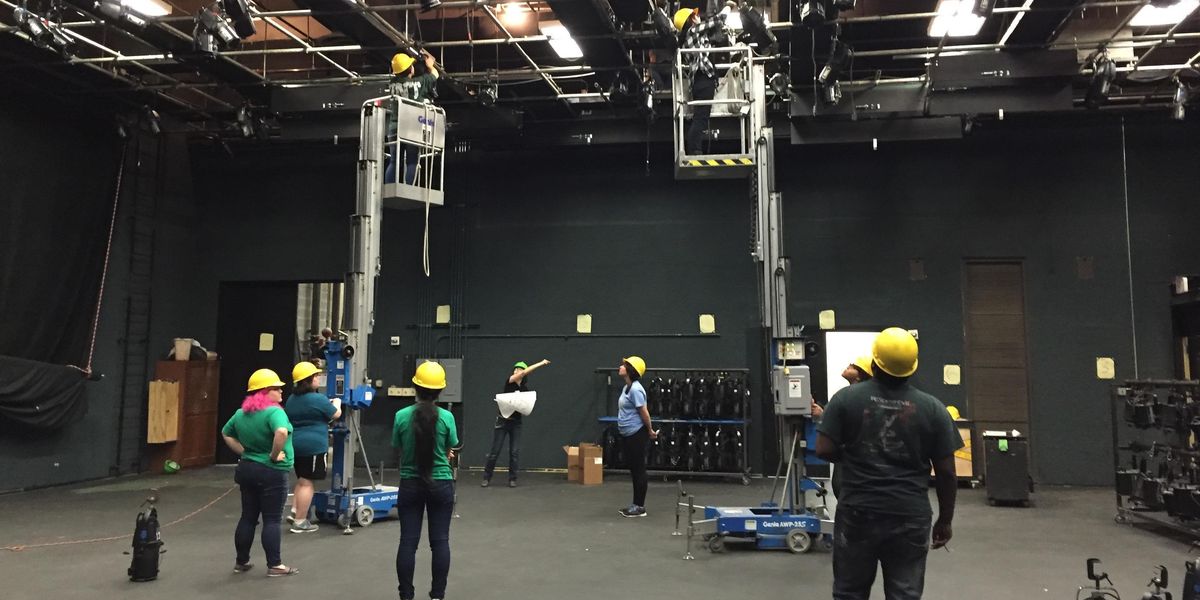Why All Aspiring Choreographers Should Try Tech Theater
Though technical theater is an integral aspect of most dance works, many performers don’t study it in-depth, if at all. But a familiarity with all the elements that make a piece come together—from costume, light, set and sound design to stage management to crew work—can give college dancers a new creative perspective and an invaluable resumé boost.
Assert your vision.
Student choreographers who’ve taken design classes “know the questions to ask designers instead of getting steamrolled by them,” says Adam Chamberlin, associate professor of lighting and sound design at University of North Texas.

University of North Texas students, Photo by Curtis Smith
Respect your collaborators
. “It’s important to know what you’re asking other people to do,” says Shawn Hove, assistant professor of dance at Connecticut College. “You might be able to come at things in a nicer way because you respect the work they’re doing.” For Don Borsh, chair of SUNY Potsdam’s dance department, “it’s humbling and it gives that perspective of, Wow, they work really hard to make me look good. It emphasizes to the performers that they are part of the whole picture.”

Connecticut College students in a piece choreographed and lit by their peers. Photo by Adam Campos.
Understand the space
. “When I picture a piece, it’s not complete without the lighting,” says Alexis DiBartolomeo, a dance and art history double major at SUNY Potsdam. “It helps me divide up the space and place my dancers.”

SUNY Potsdam students, Photo courtesy SUNY Potsdam Archives
Cut costs
. For students who are producing their own work or may be doing so in the future, having technical skills can save them the cost of hiring outside designers or crew members.




